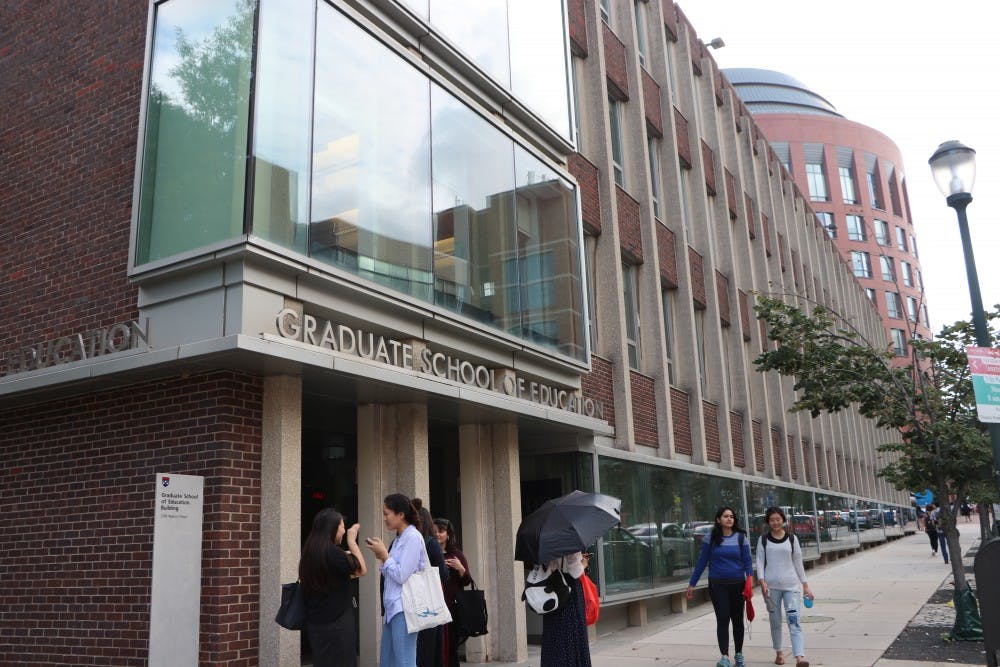The Graduate School of Education building will expand to merge with Stiteler Hall in a construction project that will connect the two spaces. The new project will accommodate the growing GSE programs and will give the school one central home on campus.
Penn hired Ann Beha Architects to construct a building that connects the school's central building at 3700 Walnut Street with the neighboring Stiteler Hall, which is located just off of Locust Walk on 37th Street. The connection will include a new entrance, a four-story student pavilion, and a two-story adjoining building with classrooms and an innovation lab.
In recent years, Penn GSE students, staff, and faculty have been spread across six buildings between 34th and 42nd streets. The expansion into Stiteler was made possible after many Economics and Political Science offices and classrooms moved to the newly opened Perelman Center for Political Science and Economics this fall.
A rough design for this new space is expected to be completed in mid-January, and a more specific timeline for the project will be determined once the design is finished, according to the press release. Around early November, GSE held a town hall meeting with the architecture firm and GSE students, faculty, and staff, who contributed to a discussion of how the new space could be formed.
"Penn GSE has taken the first steps this fall toward a state-of-the-art building expansion. Part of the Extraordinary Impact Campaign, the project aims to bring the majority of the School’s degree programs into a central location with flexible, technologically advanced learning spaces," read a GSE press release.
The expansion comes at a time when enrollment in in GSE's master's program is expanding. Associate Director of GSE Communications Jeffrey Frantz said that enrollment in the master's program increased by 50 percent between the fall of 2007 and the fall of 2017.
He added that despite GSE having a relatively high number of students among Penn's 12 schools, it is one of the schools that most lacks space.
GSE began to expand this summer when it started to move into Stiteler Hall in August.
Stiteler is now home to GSE’s Higher Education division and several Executive Education programs, which offer executive-style degree programs for working professionals and other nontraditional students, Frantz said. Before the move, Stiteler underwent minor renovations, including a new paint job and carpeting, movable chairs and tables, enhanced lighting, open work spaces, and two new classrooms.

GSE Executive Director for Communications Kat Stein said the new connecting space will prioritize collaboration.
“The expansion will establish more flexible and collaborative spaces, and ensure these spaces are accessible to the entire community,” Stein said.
Current GSE Ph.D. student Aldo Anzures Tapia said he notices a lack of space in the current GSE building, especially for students to come together and discuss their work outside of class.
“Sometimes conversations get cut off because there are no spaces where you can just hang out,” Tapia said. “If you go out [of a classroom] and may start to talk loudly, or you know, get a little more passionate about something, professors' offices are right outside of the classroom or right outside of the halls.”
Tapia said he was scheduled to have a seminar in Stiteler this year, but that the class was moved to a building on 34th Street without an explanation.
Former GSE graduate student Gabriel Angrand said he appreciated the communal spaces, like the GSE cafe, that existed in the central building while he was there, though he does think that students would benefit from classroom spaces that are more conducive to group work.
“We had space issues somewhat,” Angrand said. “The classes I was in, there were some project components and group discussions, so it would have been nice to have like round tables in order to work with people better.”









